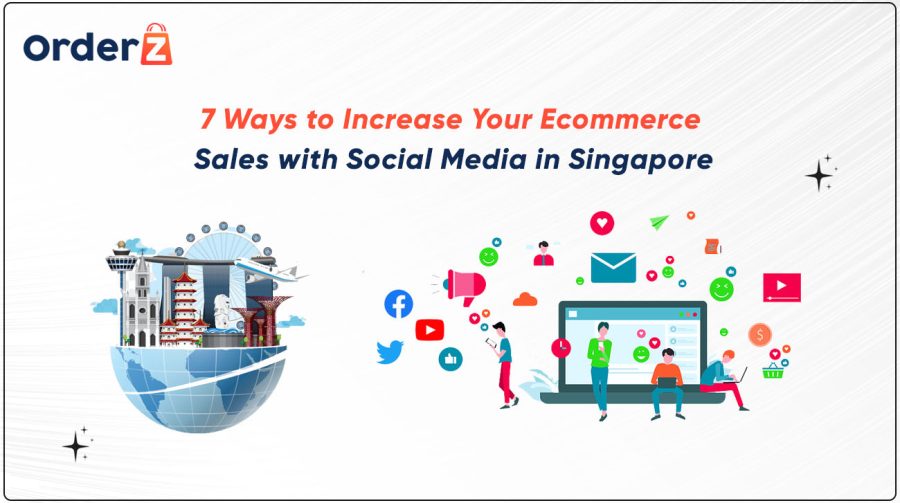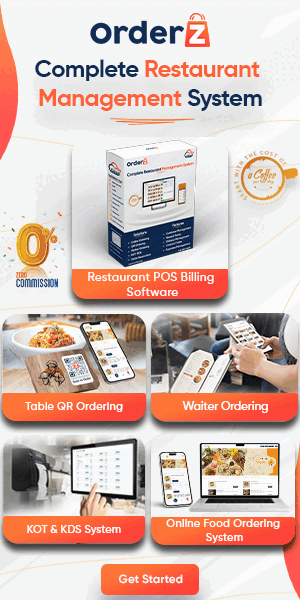Social media is a powerful tool for e-commerce businesses, especially in Singapore, where the internet penetration rate is over 90% and the average time spent on social media is more than two hours per day. Social media can help you reach potential customers, showcase your products, build trust, and drive sales.
However, to succeed in social media marketing, you need to have a clear strategy and follow some best practices. In this blog, we will share with you seven ways to increase your e-commerce sales with social media in Singapore.
1. Know Your Audience

The first step to creating a successful social media strategy is to know your audience. You need to understand who they are, what they want, and how they behave online. This will help you tailor your content, tone, and style to suit their preferences and needs.
To research your audience, you can use various tools and methods, such as:
Google Analytics:
This tool can help you track and analyze your website traffic, including the demographics, interests, behaviour, and location of your visitors.
Facebook Insights:
This tool can help you measure and optimize your Facebook page performance, including the reach, engagement, and demographics of your followers.
Instagram Insights:
This tool can help you monitor and improve your Instagram account performance, including the impressions, reach, engagement, and demographics of your followers.
Surveys and polls:
You can also directly ask your audience for feedback and opinions by conducting surveys and polls on your website or social media platforms. This can help you gain insights into their preferences, pain points, and expectations.
2. Choose the Right Platforms

The next step is to choose the right social media platforms for your e-commerce business. There are many options available, but not all of them may be suitable for your goals and audience. You need to consider factors such as:
The popularity of the platform in Singapore:
You want to choose a platform that has a large and active user base in Singapore. According to a report by Hootsuite and We Are Social, the most popular social media platforms in Singapore as of January 2023 are:
- YouTube (85% of internet users)
- WhatsApp (84% of internet users)
- Facebook (79% of internet users)
- Instagram (66% of internet users)
- LinkedIn (40% of internet users)
- Twitter (35% of internet users)
- TikTok (32% of internet users)
The suitability of the platform for your products:
You want to choose a platform that allows you to showcase your products in an attractive and engaging way. For example, if you sell visual products such as clothing or accessories, you may want to use platforms that focus on images and videos, such as Instagram or TikTok. If you sell informational products such as ebooks or courses, you may want to use platforms that allow you to share links and articles, such as Facebook or LinkedIn.
The compatibility of the platform with your goals:
You want to choose a platform that aligns with your marketing objectives and offers features that can help you achieve them. For example, if you want to increase brand awareness, you may want to use platforms that have a wide reach and viral potential, such as YouTube or Twitter. If you want to generate leads or sales, you may want to use platforms that have e-commerce integration or call-to-action buttons, such as Facebook or Instagram.
3. Create Compelling Content

The third step is to create compelling content for your social media platforms. Content is the key to attracting and retaining your audience’s attention and interest. You need to create content that is:
Relevant:
Your content should match the needs and interests of your audience and the purpose of the platform. For example, if you use Instagram to promote your products, you should post high-quality photos or videos that showcase their features and benefits. If you use LinkedIn to establish your authority, you should post informative articles or case studies that demonstrate your expertise and value.
Valuable:
Your content should provide some benefit or solution to your audience’s problems or desires. For example, if you sell skincare products, you could post tips on how to take care of your skin or reviews from satisfied customers. If you sell travel packages, you could post stories or testimonials from happy travellers or guides on how to plan a trip.
Engaging:
Your content should capture and hold your audience’s attention and encourage them to interact with you. For example, you could use catchy headlines, captivating visuals, emotional triggers, humour, or storytelling techniques to make your content more appealing. You could also use questions, polls, quizzes, contests, or giveaways to invite your audience to participate and share their opinions or experiences.
4. Collaborate with Influencers

The fourth step is to collaborate with influencers on social media. Influencers are people who have a large and loyal following on social media and can influence their followers’ opinions and behaviors. Collaborating with influencers can help you:
Reach a wider and more targeted audience:
Influencers can expose your brand and products to their followers, who are likely to be interested in your niche and trust their recommendations.
Increase your credibility and trust:
Influencers can endorse your brand and products and share their positive experiences or reviews with their followers, who are likely to trust their opinions and follow their advice.
Boost your engagement and conversions:
Influencers can create engaging content for your brand and products and encourage their followers to take action, such as visiting your website, following your social media accounts, or making a purchase.
To collaborate with influencers, you need to:
Identify the right influencers for your brand:
You need to find influencers who have a relevant and sizable audience, a high engagement rate, a good reputation, and a compatible style and tone with your brand.
Reach out to them and propose a collaboration:
You need to contact them via email or direct message and introduce yourself and your brand. You need to explain why you want to work with them and what you can offer them in return, such as free products, commission, or exposure.
Agree on the terms and expectations of the collaboration:
You need to discuss and agree on the details of the collaboration, such as the type, frequency, and duration of the content, the hashtags, links, or tags to use, the disclosure of the partnership, and the measurement of the results.
5. Consider Paid Advertising

The fifth step is to consider paid advertising on social media. Paid advertising is a way of promoting your brand and products to a specific audience using paid ads on social media platforms. Paid advertising can help you:
Increase your reach and visibility:
Paid ads can help you reach more people who may not be aware of your brand or products or who may not follow your organic posts.
Target your ideal customers:
Paid ads allow you to customize your audience based on various criteria, such as demographics, interests, behaviour, location, or device.
Optimize your budget and performance:
Paid ads allow you to set your budget and bid strategy based on your goals and preferences. You can also track and analyze your ad performance using various metrics, such as impressions, clicks, conversions, or cost per result.
To use paid advertising on social media, you need to:
Choose the right platform and ad format for your goals:
You need to select the platform and ad format that best suits your objectives and products. For example, if you want to increase brand awareness, you could use video ads on YouTube or Facebook. If you want to generate sales, you could use carousel ads on Instagram or Facebook.
Create an attractive and persuasive ad copy and design:
You need to create an ad that catches your audience’s attention and convinces them to take action. You need to use a clear and catchy headline, a compelling image or video, concise and relevant text, and a strong call-to-action button.
6. Engage with Your Audience

The sixth step is to engage with your audience on social media. Engagement is the level of interaction between you and your audience on social media platforms. Engagement can help you:
Build relationships with your audience:
Engagement can help you establish rapport and trust with your audience by showing them that you care about them and value their opinions.
Increase customer loyalty and retention:
Engagement can help you retain your existing customers by keeping them satisfied and happy with your brand and products. You can also reward them for their loyalty by offering them discounts, coupons, or freebies.
Generate word-of-mouth referrals:
Engagement can help you generate positive word-of-mouth referrals by encouraging your audience to share their experiences or reviews with their friends or family.
To engage with your audience on social media, you need to:
Respond to their comments and messages:
You need to reply to their comments and messages promptly and politely. You need to answer their questions, address their concerns, thank them for their feedback, or apologize for any inconvenience.
Ask for their feedback and suggestions:
You need to ask them for their feedback and suggestions on how to improve your brand or products. You need to show them that you appreciate their input and that you are willing to implement their ideas.
Create a community around your brand:
You need to create a community around your brand by inviting your audience to join groups or forums where they can interact with each other and with you. You need to facilitate discussions, share tips and offer support.
7. Track and Analyze Performance

The seventh step is to track and analyze your performance on social media. Tracking and analyzing your performance can help you:
Measure your results and progress:
Tracking and analyzing your performance can help you measure how well you are achieving your goals and objectives. You can use various metrics, such as reach, impressions, clicks, conversions, or revenue, to evaluate your results and progress.
Identify your strengths and weaknesses:
Tracking and analyzing your performance can help you identify what is working and what is not working for your social media strategy. You can use various tools, such as Google Analytics, Facebook Insights, or Instagram Insights, to monitor and compare your performance across different platforms, campaigns, or content types.
Optimize your strategy and tactics:
Tracking and analyzing your performance can help you optimize your strategy and tactics based on the data and insights you gather. You can use various methods, such as A/B testing, experiments, or surveys, to test and improve your strategy and tactics.
Conclusion
Social media is a vital channel for e-commerce businesses in Singapore. By following the seven steps we have discussed in this blog, you can create and execute a successful social media strategy that can help you increase your e-commerce sales.
To recap, the seven steps are:
- Know Your Audience
- Choose the Right Platforms
- Create Compelling Content
- Collaborate with Influencers
- Consider Paid Advertising
- Engage with Your Audience
- Track and Analyze Performance
We hope you found this blog helpful and informative. Thank you for reading! ?



